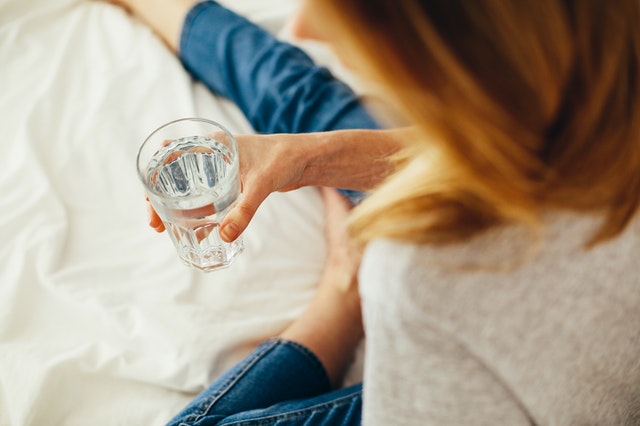Why Hydration is Essential + How to Stay Hydrated
Sep 23, 2024
Written by Cristina Thorson, Guest Writer
We’ve heard it time and time again: drinking water is good for you. It’s true—it is. Hydration is essential to our well-being. Keeping properly hydrated can boost your quality of life, and it’s one of the easiest ways to take care of yourself. But it’s also easy to forget. Read on for some reminders on why you should drink water, and how to keep up the healthy habit of hydration.
Benefits of hydration
To keep all the essential functions working properly, we need an adequate supply of H2O. Hydration has numerous mental and physical benefits, including…
- Boosting your workout performance
- Improving your mood and energy levels
- Helping us heal and recover faster
- Contributing to healthier skin
- Flushing toxins from the body (which helps gut health!)
- Regulating body temperature
Our bodies are 60% water, so it only makes sense that we thrive with proper hydration. Read on for more tips to stay hydrated throughout your day.

How to keep your body hydrated
Sometimes, the need to hydrate can be forgotten. It’s easy not to think about our body’s craving for water. However, hydration is still important for our well-being. Here are some tips to keep yourself hydrated.
Keep in touch with your body
If you’re sitting down at a computer all day, it can be easy to fall out of touch with your physical being. Physical activity can help keep you in touch with what your body needs. Even a quick walk (or run) around the block can help you get in touch with your body. Take stock of what’s hurting and how different areas are feeling. Gauge your stress levels, your hunger levels, your thirst levels. Keep in mind that more sweating means you should be drinking more water. In winter months, make sure you’re staying warm with layers of clothing or a down jacket if you go outside.

Invest in a water bottle
Keeping a water bottle with you is a great way to stay hydrated. If you need to run errands or go to the gym, take your water bottle along and sip from it. It’s also a good way to measure how much water you’re drinking, and an easy way to set goals for yourself.
Set goals for water intake
If you struggle with remembering to drink water, set goals for yourself. Make sure they’re easy to track. You could set a goal of six water bottles per day, or you could attach two bottles of water to each meal. It might be easier to attach your goal of drinking water to a pre-existing activity you already have. For example, your goal might be, before I go for a walk, I’ll drink x bottles of water. When I get back, I’ll drink x bottles of water.
Eat foods high in water content
Incorporating lots of plants, like fruits and vegetables, will help you get in your recommended H2O intake. Fruits and vegetables tend to have a higher amount of water than other foods. Watermelon, cucumbers, lettuce, oranges…even skim milk. There’s an abundance of foods that are high in water. If fruits or vegetables don’t appeal to you, try something like miso soup.
Watch out for dehydration
Dehydration can be easy to miss…until it negatively affects your quality of life. Even when you’re dehydrated, it can be easy to mistake the symptoms for something else. Stay on the lookout for some of these indicators for dehydration:
- Headaches
- Fatigue
- Dizziness
- Thirst
- Craving sugar
- Irritability
- Bad breath
- Dry skin
- Difficulty concentrating
- Dark urine
- Muscle cramps
If you have any of these symptoms, it might be time to drink some water. Remember that it’s better to be proactive. Try not to wait until you’re dehydrated to drink water—use some of the tips above to prevent dehydration before it begins. For more tips, check out this visual guide here.
About the Author
Cristina Thorson is a part-time content writing intern at SiegeMedia and a full-time student at Boston University. She enjoys exploring new pockets of cities, culture, and cat websites (as well as alliterative expressions). In her spare time she can be found reading books, commenting on movies, and writing anything from advertising copy to feminist satire.
